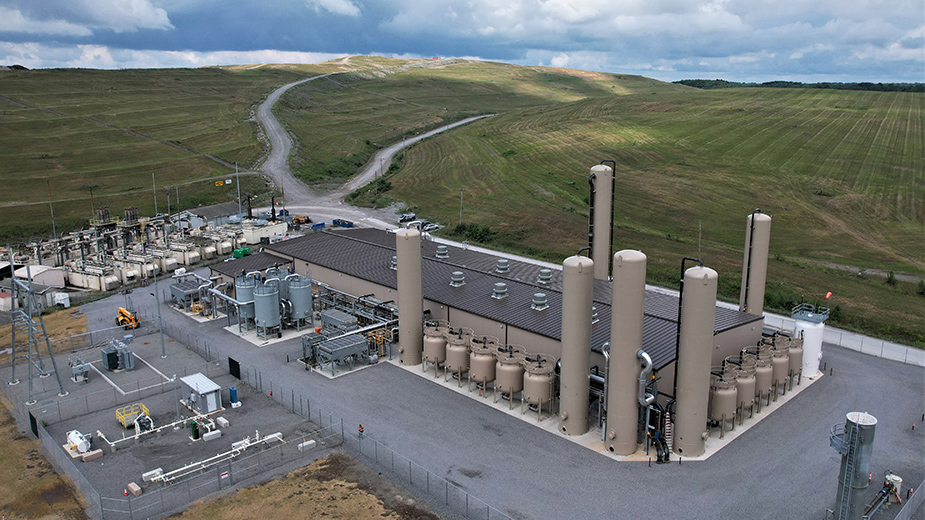POLAND – One of the largest renewable natural gas plants of its kind in North America has kicked off operations near Republic Services’ Carbon Limestone Landfill in Poland Township.
Australian energy producer EDL, whose North American operations are based in Lansing, Michigan, announced Aug. 2 that the company’s new RNG plant started production July 12.
“It’s an all-brand-new plant,” Richard DiGia, EDL’s North American CEO, told The Business Journal. The new plant captures gas generated by decomposing materials in the landfill and purifies it into renewable natural gas for the commercial market, he said.
EDL operated a gas-fed electrical power plant at the site for 20 years and has a long-standing relationship with Republic Services, DiGia said. As the contract for that service neared its maturity, a decision was made to invest nearly $100 million and construct a modern renewable natural gas facility at the site.
He said state incentives have encouraged energy companies such as EDL to convert their power generation plants into RNG facilities.
The Carbon Limestone Landfill is large enough to produce sufficient feedstock for the plant, DiGia said. “You do need a fairly large scale to build these projects to support the intensive capital investment,” he said.
Also, the site has access to a pipeline network operated by Pennant Midstream, which operates a large processor in nearby Springfield Township. “When we produce this gas, we don’t store it,” DiGia said. “We put it immediately in a pipeline.”
The Carbon Limestone plant is among the 10 largest of its kind in North America and the largest in EDL’s portfolio, DiGia said. A second plant in Oberlin at the Lorain Landfill is set to start operations as well.
Gas produced from landfills is half methane, half carbon dioxide and is compromised with other trace contaminants, DiGia said. The Carbon Limestone plant separates these contaminants and produces a nearly pure methane stream that meets regulatory approval for pipeline transmission.
“When you put gas in a pipeline in this country, you can transport gas anywhere,” he said. Electricity, on the other hand, is sold in regional markets.
Construction took roughly 15 months, DiGia said. There are five employees at the plant. The company is also considering a similar redevelopment project in Pennsylvania, he said.
Other stakeholders in the project include Republic Services, NW Natural Renewables and Pennant Midstream. Republic, for example, has set ambitious sustainability goals to reduce emissions and increase the beneficial reuse of biogas by 2030.
“At Republic Services, our vision is to partner with customers to create a more sustainable world now and for future generations,” Chris Nie, Republic Services area president, said in a statement.
“Through our partnership with EDL, we are capturing gas that is created by decomposing waste in our landfill. This project allows us to convert that gas into a lower-carbon fuel source that reduces greenhouse gas emissions.”
Under an agreement signed in February 2022, Pennant Midstream will transport up to six million cubic feet of renewable natural gas per day through its existing system from the landfill, redelivering the gas to EDL’s downstream markets. Pennant is a subsidiary of UGI Energy Services.
NW Natural Renewables has agreements in place for a 20-year supply of RNG produced by the plant.
“We’re excited for this project to begin operations and start providing renewable natural gas to NW Natural Renewables and its customers,” said Mike Kotyk, president of NW Natural Renewables.
“We believe renewable natural gas will play a critical role in decarbonizing our energy system across North America and helping us reach our collective climate goals.”
Pictured at top: This drone photo, provided by EDL, shows the Carbon Limestone Landfill site in Poland Township, one of the largest renewable natural gas plants in North America.
